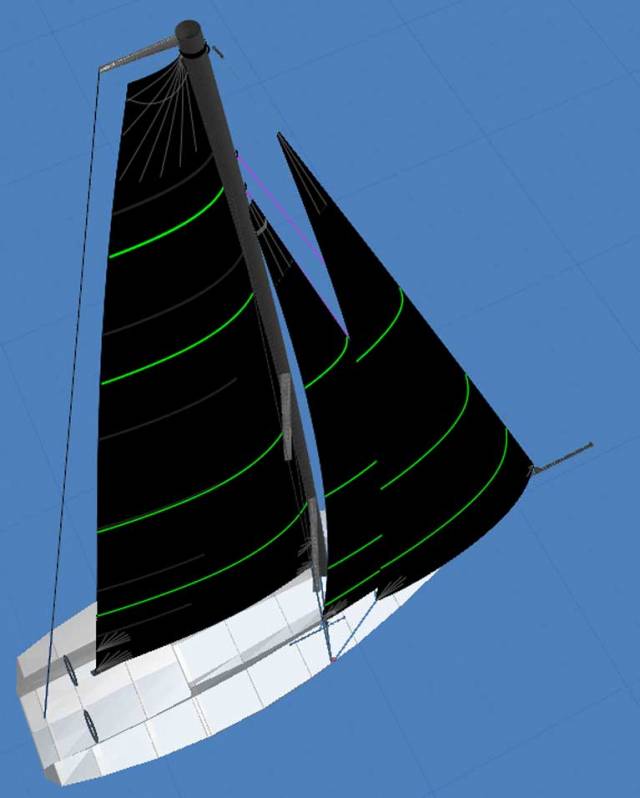In recent years, asymmetric sails have become much more popular. If you have a boat with a sprit you will likely have 100% asymmetric downwind sails. If you have a boat with a pole, it is likely you will (or should have) at least one asymmetric spinnaker for reaching which will be either tacked to the bow or else tacked to the end of the pole, with the pole set as low as possible.
However, there are other downwind sails that are now becoming much more popular and on competitive offshore boats they are becoming an integral part of a boats arsenal.
Barry Hayes, Sail Designer and Director of UK Sailmakers Ireland has a great deal of experience with these sail options from his time running UK Sails Hong Kong and here, in this article published in association with ICRA, he goes through their use and set up.
The sails in question are: Flying Jibs; Code 0s; Jib Staysails and Spinnaker Staysails
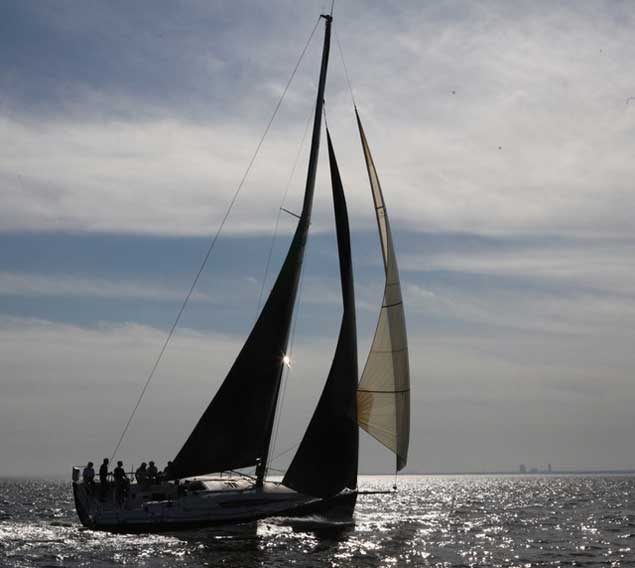 Flying Jibs set on a sprit on a cable outside the forestay, are the new kids on the block
Flying Jibs set on a sprit on a cable outside the forestay, are the new kids on the block
Recent IRC rules changes have revolutionised how modern race boats are sailed; both offshore and inshore. Rule 21.3.3, changed in 2017, now permits your headsail to be flown outside the forestay on a prodder or bowsprit:
21.3.3 RRS 50.3(a) is amended to the extent that a spinnaker or a headsail may be tacked to a bowsprit.
With the major IRC rule change you can now set your headsail outside the forestay. This has changed the game how modern race boats sail offshore and inshore.
Flying Jibs
Flying jibs, set on a sprit on a cable outside the forestay, are the new kids on the block.
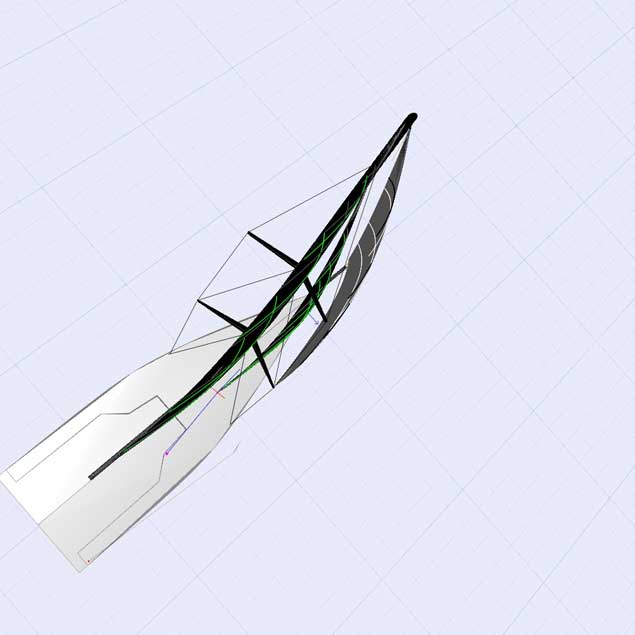 Flying Jib
Flying Jib
With the development of code zeros and as boats got faster; race boats needed a smaller, flatter sail to reach faster and higher. Their design and function are totally different from a code zero as we know it.
The sail can be used from 5 to 20 kts, set on a small sprit. From 45 degrees down to 80 degrees so it's really designed for fast reaching. Easy to set and furl. You can leave it up when not in use reaching. The sails can furl in and out as needed. It's always hoisted and dropped on the windward side of the boat. The sail is used with a headsail on the forestay and/or a Jib staysail inside that. So a 2 or 3 headsail option depending on the angle.
The flying jib is sheeted behind the keel at a point which sets the sail evenly along its forestay cable. The force is always pulling the boat forward. The head of the sail set at the same height as the top of the forestay both to reduce drag and righting moment. The area is never greater than the IRC Head Sail Area (HSA). The Flying Jib effectively replaces the need for a High Clew Reacher (or Jib Top) as this option is much more efficient than a Jib Top.
The Anti-Torsion cable which the Flying Jib is flown off is absolutely critical. It has to be of very high quality or there will be problems before you have even started. The furler and its functionality are also crucial for the Flying Jib to perform. A ratchet furling system provides complete control of when the sail opens, and allows you to stop it if you have any drama. It also ensures the sail does not unfurl prematurely during the hoist. You can hoist and tension the cable and be 100% happy before you deploy.
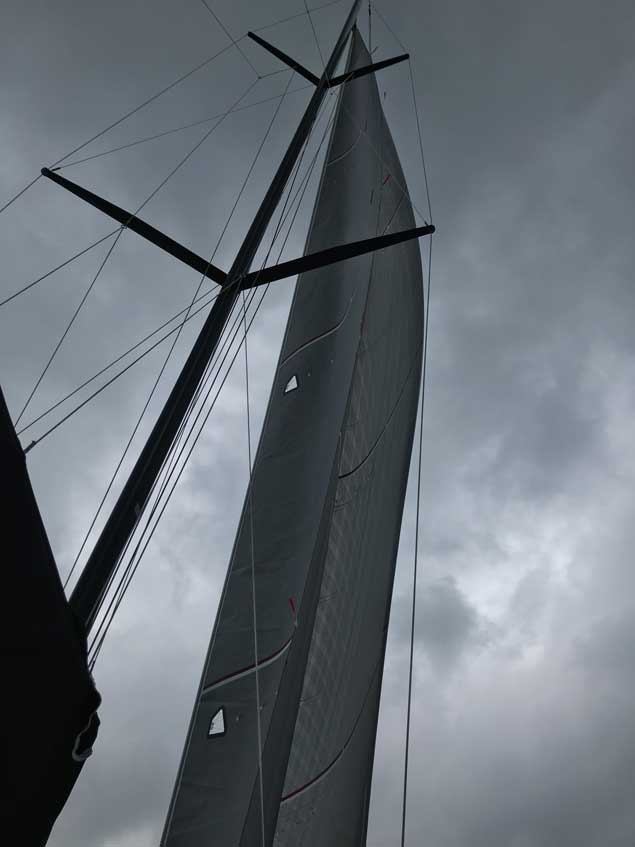 Flying Jib
Flying Jib
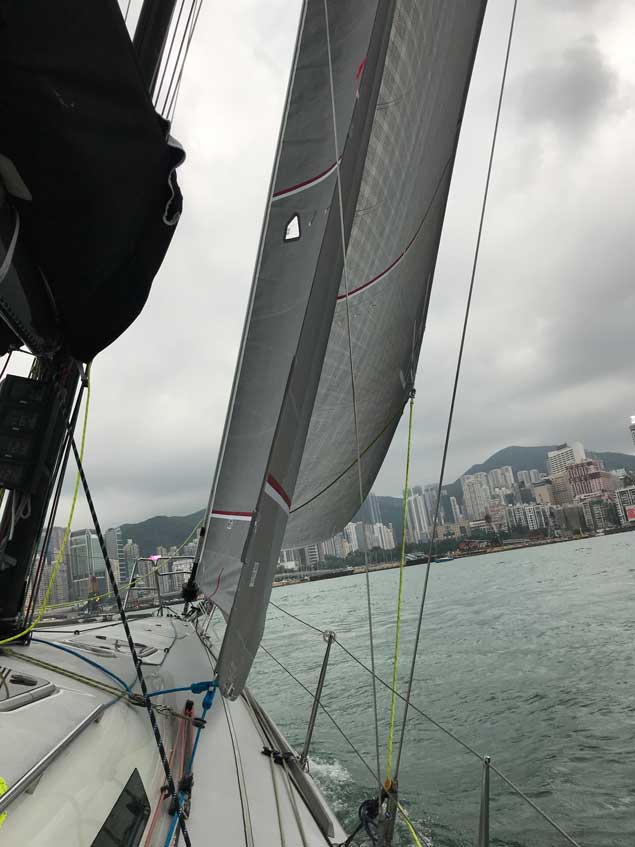 Flying Jib
Flying Jib
Needless to say; the design of the Flying Jib is paramount. The twist should be about 12% set at 70 % of the leech to control how the sail opens and closes as the sheet is eased. The draft is set at approximately 38% so the power is forward. The shape is more or less the same as a J2 headsail design – too deep won’t work as you need a good working sail shape.
Code Zero
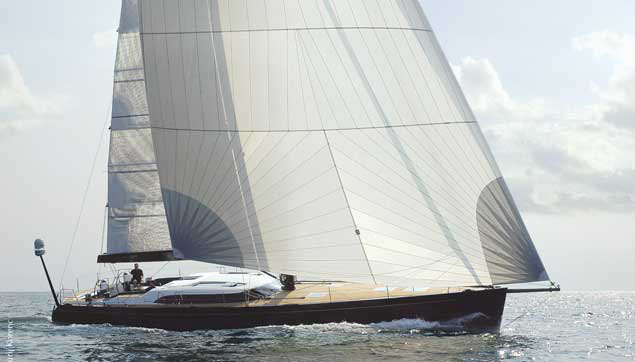 Code Zero – it is a versatile sail; it can be used for cruising and deliveries – but most of all racing
Code Zero – it is a versatile sail; it can be used for cruising and deliveries – but most of all racing
After considering the above; we now move to the code zero. The must have sail in any offshore boats arsenal.
A Code Zero is a versatile sail; it can be used for cruising and deliveries – but most of all racing. Code Zeros are designed to be used in light airs upwind – reaching in medium wind, and downwind in heavy airs. For cruising and offshore boats a code zero is essential at night and in heavy airs.
The working angles of the sail are 50 degrees to 120 degrees apparent wind angle – and can also be used in heavy airs down wind or at night. If you get a knockdown or broach you just furl it away.
The size is normally Masthead with a 165 % overlap and the mid girth for racing boats needs to be 75 % of the foot length to satisfy IRC rule requirements.
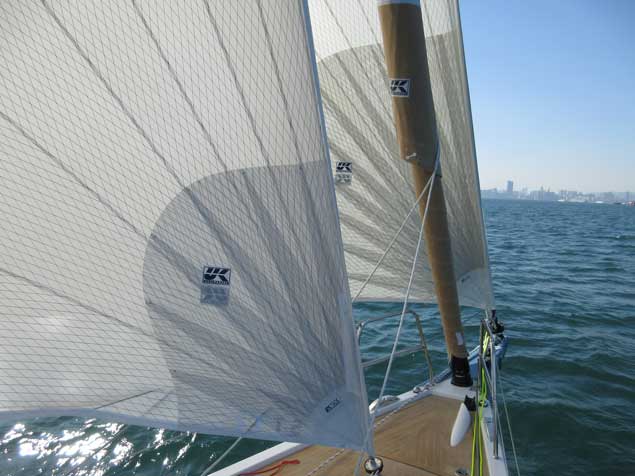 Code Zero
Code Zero
Under 35 foot boats can use direct furling but anything over that you need topdown furling. So the sail is tight on the cable and the load of the furling system is halved. This will increase the furling line speed under load and will give you a tighter furl, which is critical with windage and handling. The sail can be masthead (MHO) or fractional to the top of the forestay (FRO)
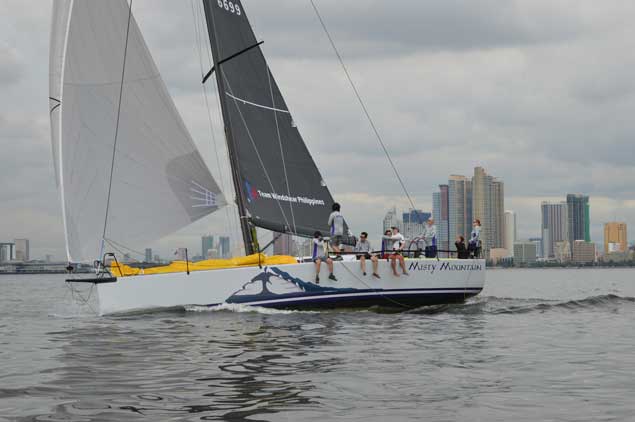 Code Zero
Code Zero
Having an MHO with 165% over lap normally works out at double the headsail area. But with the shape of the sail and the 75% midgirth for racing sails. The sail is very powerful with a flat design shape.
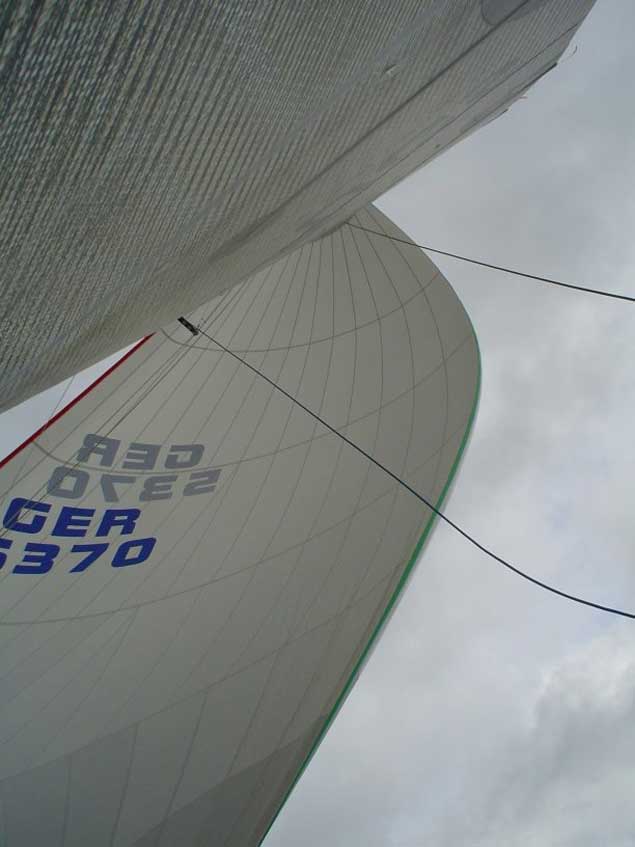 Code Zero
Code Zero
With modern designed code zeros the leech never flaps like other designs. The sheeting angle needs to be 45% degrees. Any lower will have an open leech losing power. The foot should be flat upwind but reaching it should be full. To bring the power forward. You can use an MHO with a reef in the main to push the bow down and unload the ruder and reduce the lead of the boat. Increasing the down wind speed.
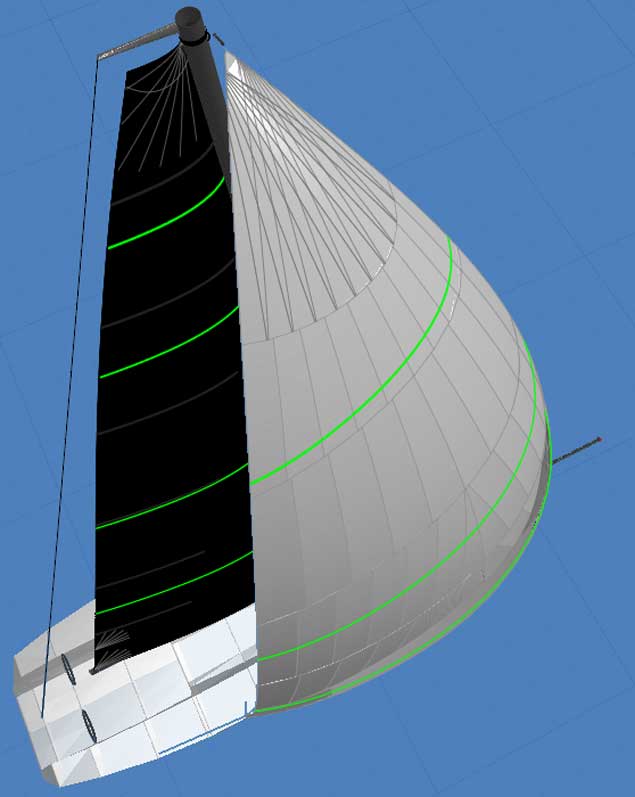 Code Zero
Code Zero
The sail is always hoisted and dropped on the windward side with one sheet on the sail. If you use a top down furler on the code zero. then you can use that same furler on the Flying Jib without having 2 furlers. You cannot do this with a standard furler without a ratchet.
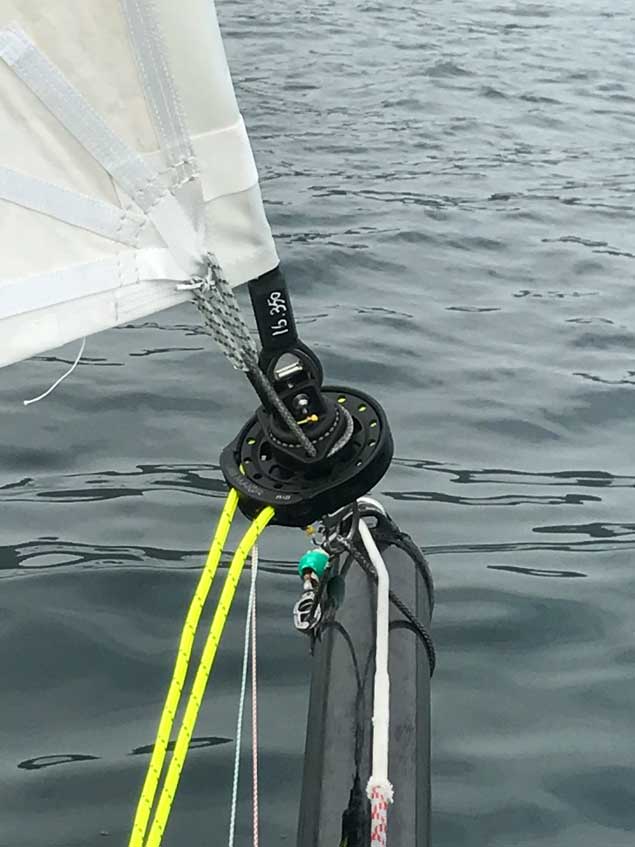 Code Zero Furler
Code Zero Furler
This now brings us to Jib staysails and Spinnaker staysails. There is a big difference between the two sails. And they are used in two totally different set ups.
Jib Staysails
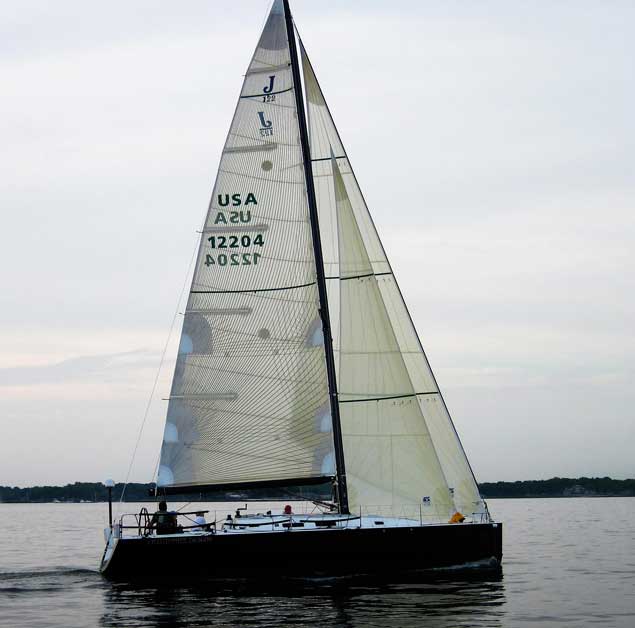 Jib Staysail – its main use is to direct the flow around the mainsail to fill the slot so the apparent airflow is used to its max
Jib Staysail – its main use is to direct the flow around the mainsail to fill the slot so the apparent airflow is used to its max
The Jib staysail is set on a furler on a staysail halyard. Normally tacked 1/3 of the distance behind the forestay, it needs to be hoisted paralell to the forestay., . . Its working angles are from 55 degrees to 90 degrees and set inside the Jib top and or a Flying Jib . This set up will push the bow down a lot. And you can use this set up with a high stability boat for reaching.
The design of the sail is very flat with medium draft at 40 % and a small amount of twist. As it’s being used in heavier wind, its main use is to direct the flow around the mainsail to fill the slot so the apparent airflow is used to its max. The sail is sheeted onto the top of the coach roof or used on the inhauler depending on which set up you have.
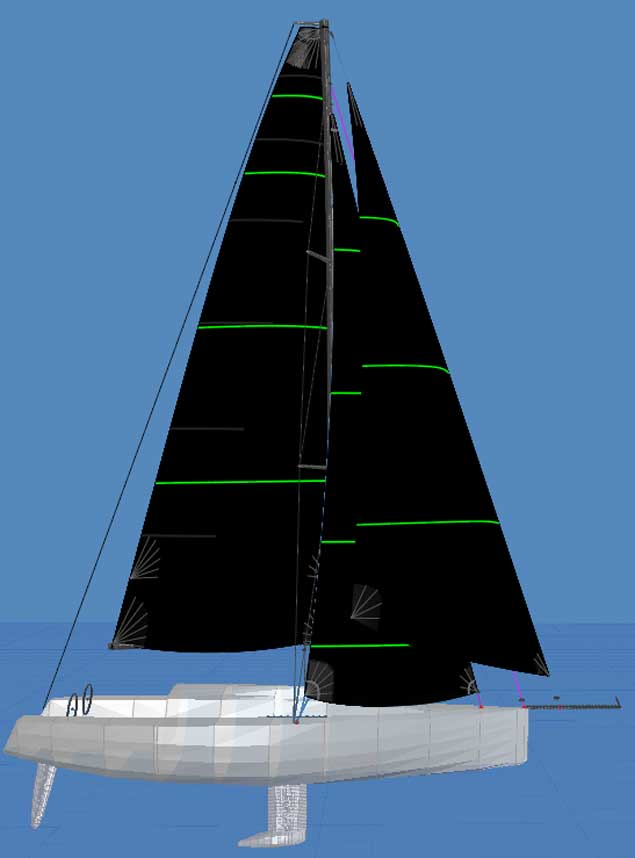 Flying Jib Side
Flying Jib Side
These 3 different downwind sails are generally for reaching , either in Lighter air (Code 0) or in stronger wind (Flying Jib and Jib Staysail). They would normally be set when you cannot get a spinnaker up, maybe because the angle is too tight (code 0) or there is too much wind (flying Jib/Jib Staysail).
If you only occasionally sail offshore, you might decide that none of these downwind sail options are needed. However, if you sail offshore regularly we can all remember times we end up reaching in light to medium airs, too tight for a spinnaker or the spinnaker is too powerful. What do we do? We outboard sheet our Headsail. However with the prevalence nowadays for non overlapping headsails, reaching for long periods with a small Jib is not quick, hence the benefit of these sails. There is a reason why all the top offshore big boats now all have these sails. Just look at the photos of the Volvo, Imoco 60s, Rambler etc to see them all using these type of sails.
Spinnaker Staysails
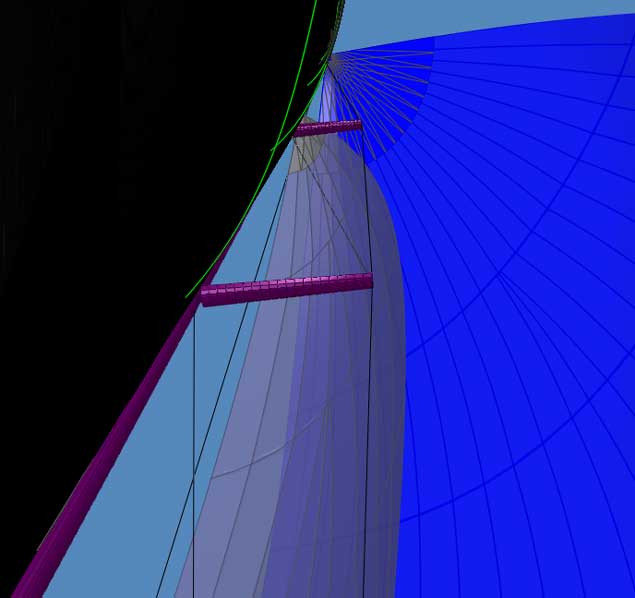 Staysails are like a mini code zeros; set inside your Symmetric or Asymmetric Spinnaker
Staysails are like a mini code zeros; set inside your Symmetric or Asymmetric Spinnaker
Now on to the Spinnaker Staysail. This sail has evolved a lot from the days of large Jib staysail with a hollow leech. Those days are well behind us. A modern Spinnaker Staysail is normally set 1 m behind the forestay on a very small furler with a soft Kevlar luff so the sail can be furled and stored away easily. It is set with any spinnaker over 8 kts of wind from 90 to 160 degrees apparent wind angle.
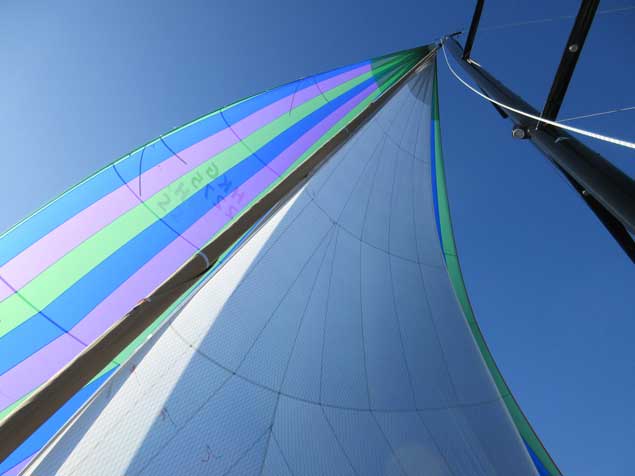 Staysail
Staysail
Modern Spinnaker Staysails are like a mini code zeros; set inside your Symmetric or Asymmetric Spinnaker. It turns the airflow around the back of the mainsail in an even flow. The apparent wind angle is increased as it meets the staysail. The mid girth of the spinnaker staysail cannot be greater than 75% of the foot of the sail but its normally around 65 % to both fit the rig and turn the airflow efficiently around the sail and back on to the mainsail,
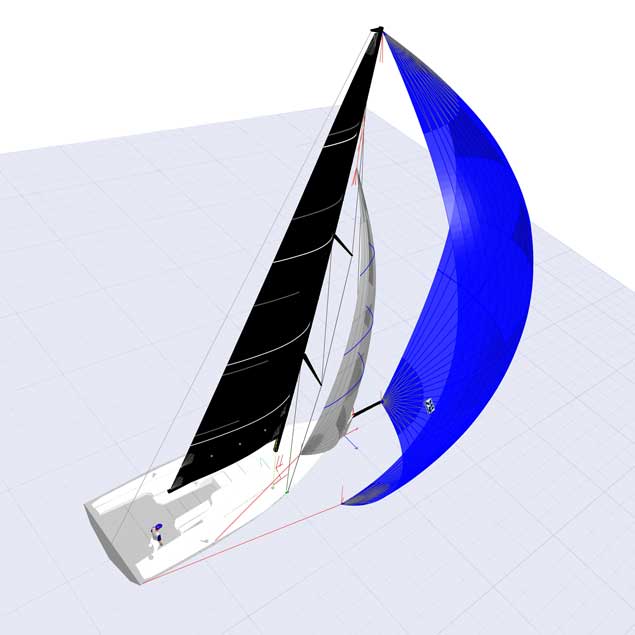 Staysail
Staysail
The spinnaker staysail is set on sheets at the base of the shrouds about 0.5 m to 1 m. long with strops and eyes on the end. This keeps the leech open and allows the sails to be sheeted on easily with a 45 degree sheet angle. This mini code zero staysail is a great sail for windward leeward as you can leave it plugged in down the hatch with the sheets on and just put a jib halyard on it to hoist.
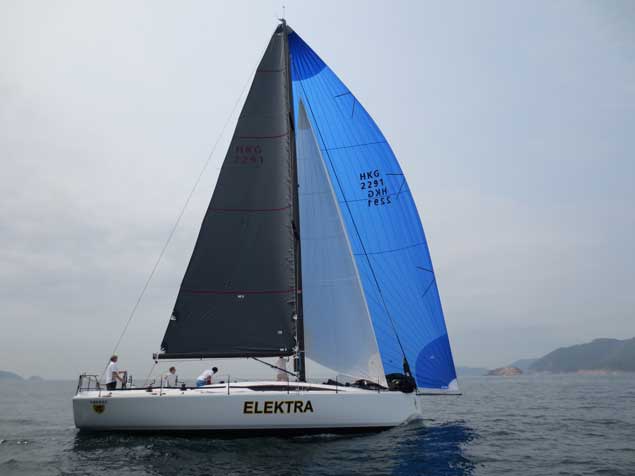 Staysail
Staysail
The Staysail is normally trimmed by the mastman. The “if in doubt let it out” policy works very well with a Staysail. If the Staysail is over sheeted it moves the apparent wind angle forward – which means the Asymmetric or symmetric Spinnaker believes it is sailing a higher course than it is – which means it needs to be sheeted on harder – which in turn causes additional heel without any increase in power! All this combines to slow the boat down.
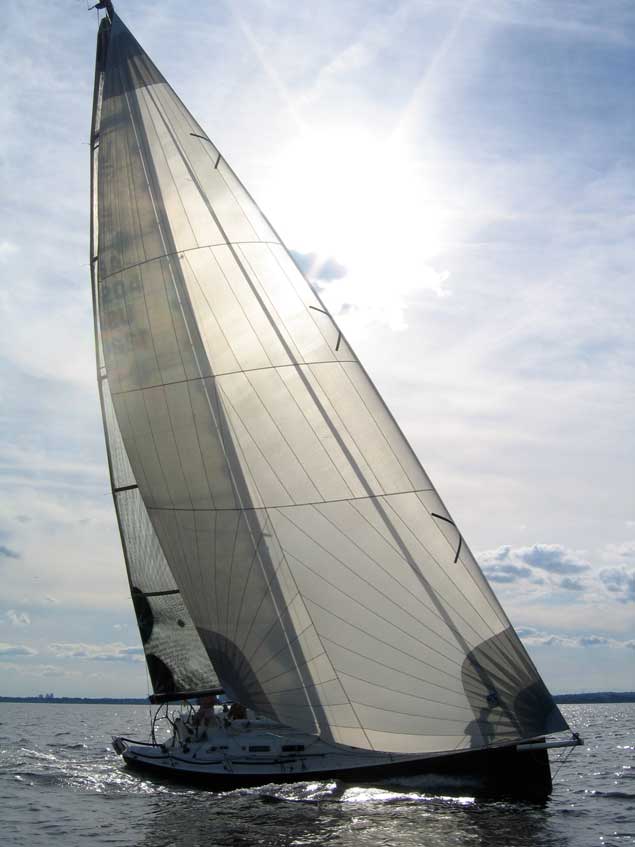
Just a few options that should be considered if you race offshore regularly - Thanks for reading, Barry Hayes
Barry Hayes is a sail designer and product development manager and owner of UK Sailmakers Ireland. He is a member of the Board of Directors UK Sailmakers International


























